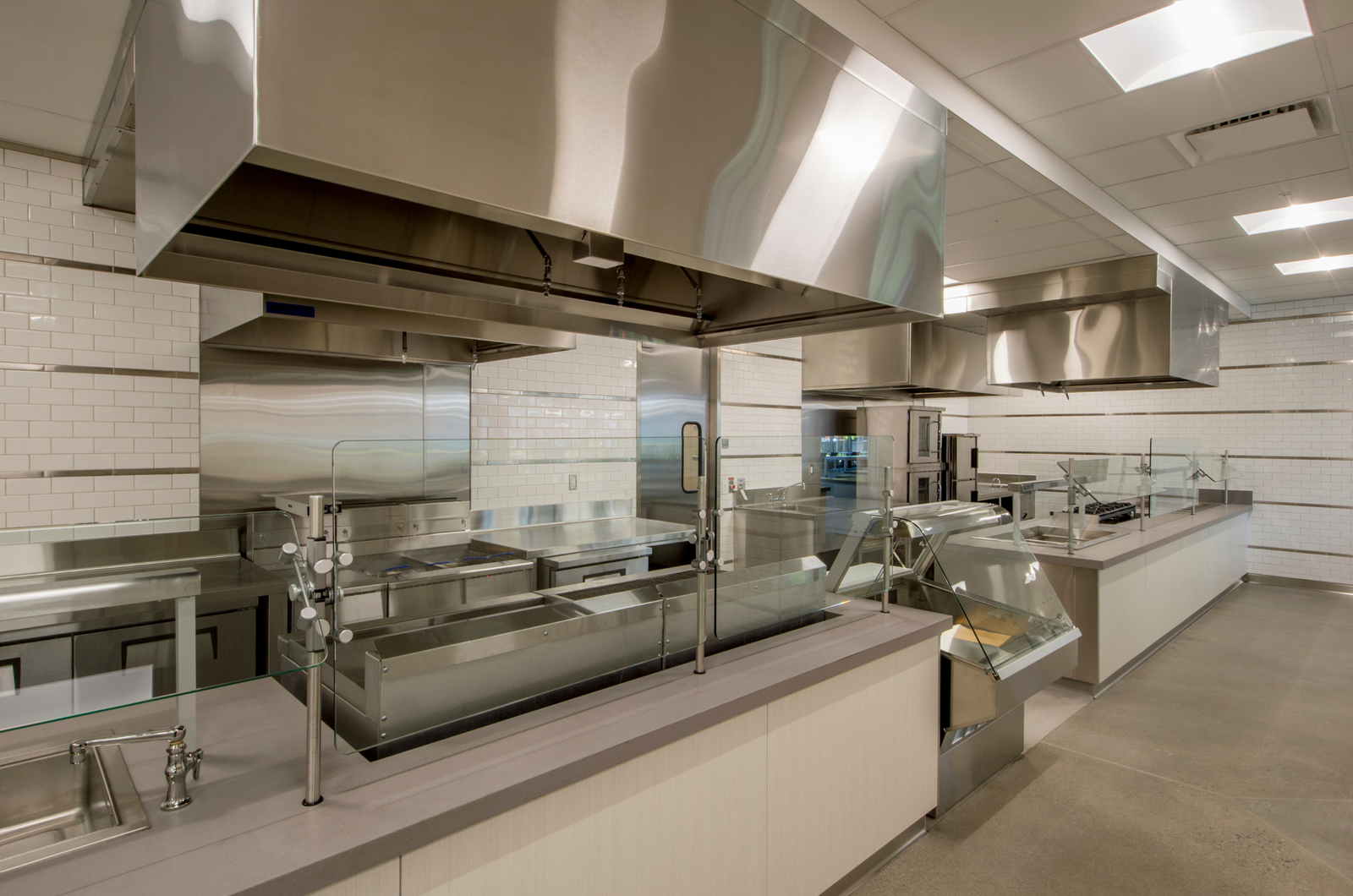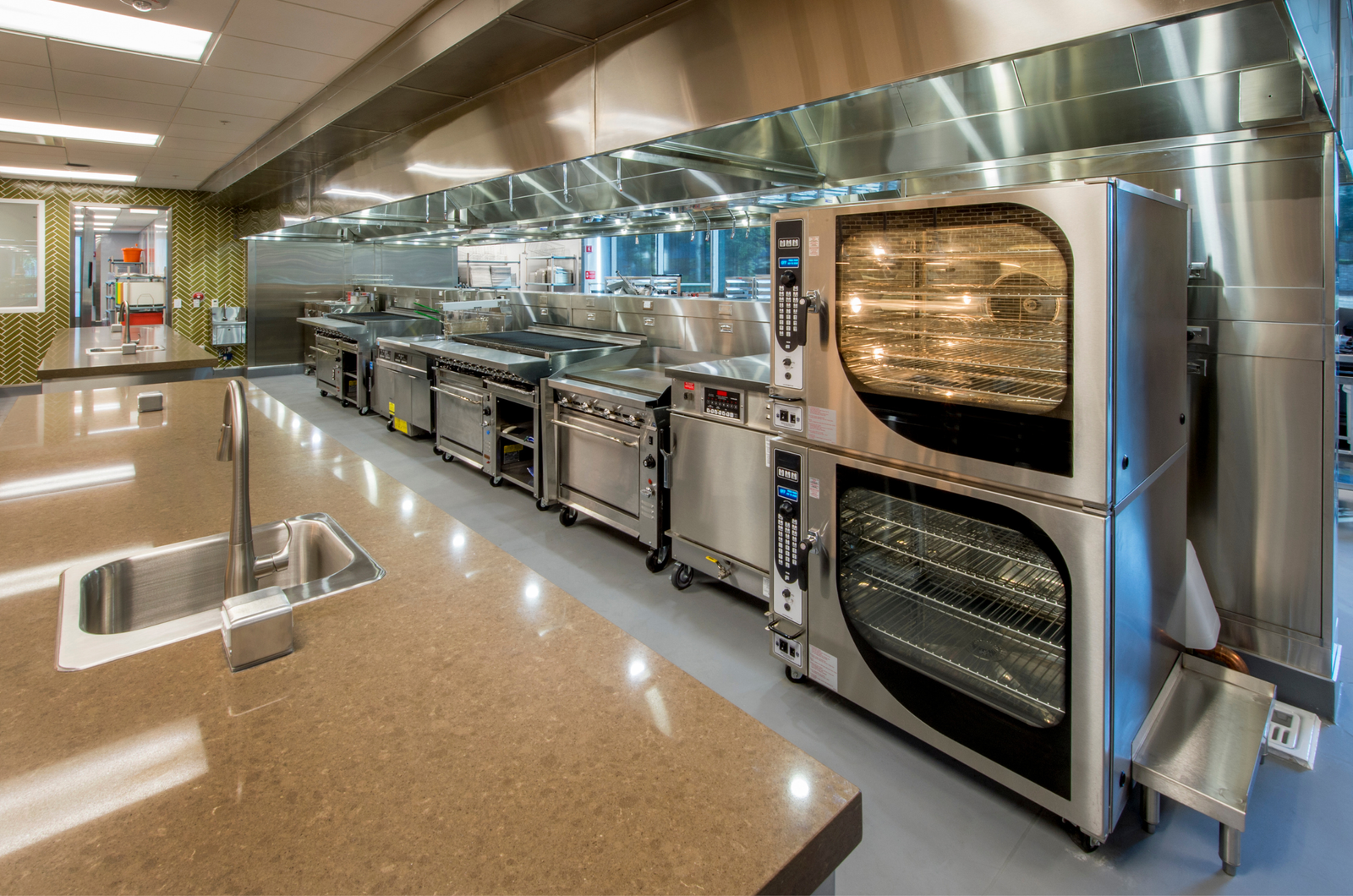COMMERCIAL KITCHEN RESURFACING IN SYDNEY
Enhance Safety and Extend Surface Life with Professional Resurfacing
Resurfacing a commercial kitchen provides a host of advantages, particularly for businesses that prioritize cleanliness, efficiency, and aesthetics



Here are several compelling reasons why a commercial space should consider kitchen resurfacing:
- Enhanced Hygiene and Safety: A resurfaced kitchen surface helps create a cleaner, more hygienic environment. It reduces the risk of food contamination by sealing cracks and crevices where bacteria can thrive, thus ensuring a safer food preparation area.
- Cost-Effective Renovation: Resurfacing is a more economical option than a complete kitchen remodel. It allows businesses to refresh their kitchens without the hefty price tag of new installations or extensive construction.
- Improved Aesthetics: A newly resurfaced kitchen can dramatically improve the visual appeal of the space. Whether it’s changing outdated surfaces or simply freshening up the look, resurfacing can make the kitchen more inviting for both staff and customers.
- Extended Surface Life: Resurfacing can extend the life of existing surfaces, making them more durable and resistant to wear and tear. This can save on future maintenance costs and reduce the frequency of necessary repairs.
- Minimal Downtime: Compared to a full kitchen renovation, resurfacing can be completed relatively quickly, minimizing downtime and disruptions to the business operations. This ensures the business continues to function smoothly while improvements are made.
- Customizable Options: Businesses can choose from a variety of colors and finishes to match their brand’s aesthetic or to create a new look for their kitchen space. This customization can enhance the overall brand image and appeal to customers.
- Environmentally Friendly: Resurfacing reduces waste by reusing existing surfaces instead of discarding them. This eco-friendly approach aligns with sustainable business practices and can appeal to environmentally conscious customers.
Commercial Kitchen Resurfacing: A Smart, Cost-Effective Upgrade for Your Business
In the fast-paced world of food service, maintaining a clean, functional, and visually appealing kitchen is crucial. However, full-scale renovations can be time-consuming and expensive. Enter commercial kitchen resurfacing—a practical alternative that revitalizes your kitchen’s appearance and functionality without the hefty price tag or prolonged downtime.
What Is Commercial Kitchen Resurfacing?
Commercial kitchen resurfacing involves updating the surfaces of existing kitchen components—such as countertops, cabinets, and walls—by applying new finishes or materials. This process restores the aesthetic appeal and extends the lifespan of your kitchen fixtures, all while minimizing disruption to your operations.
Benefits of Commercial Kitchen Resurfacing
Cost-Effective Solution: Resurfacing is significantly more affordable than complete replacements. By refurbishing existing structures, businesses can allocate funds to other critical areas, such as staff training or marketing.
Minimal Downtime: Unlike full renovations that can halt operations for weeks, resurfacing projects are typically completed within days. This swift turnaround ensures that your business continues to serve customers with minimal interruption.
Enhanced Aesthetics: A fresh, modern look can be achieved through resurfacing, impressing both customers and staff. Updated surfaces contribute to a more inviting atmosphere, which can boost customer satisfaction and employee morale.
Sustainable Choice: By opting to resurface rather than replace, businesses reduce waste and promote environmental sustainability. This eco-friendly approach aligns with the growing consumer demand for green practices.
Compliance with Health Standards: Resurfacing can help meet health and safety regulations by repairing damaged surfaces that might harbor bacteria, ensuring a hygienic environment for food preparation.
Ideal Candidates for Commercial Kitchen Resurfacing
Commercial kitchen resurfacing is suitable for various establishments, including:
-
Restaurants and Cafés: High-traffic areas benefit from durable, easy-to-clean surfaces.
-
Hotels and Resorts: Maintain a luxurious appearance in dining areas and room service kitchens.
-
Hospitals and Care Facilities: Ensure sanitary conditions in food preparation zones.
-
Educational Institutions: Keep cafeterias and culinary classrooms up to standard.
-
Corporate Offices: Enhance employee break rooms and canteens.
The Resurfacing Process
Assessment: Professionals evaluate the current condition of surfaces to determine suitability for resurfacing.
Preparation: Surfaces are cleaned and prepped to ensure proper adhesion of new materials.
Application: New finishes, such as laminates or coatings, are applied to existing structures.
Curing: Materials are allowed to set and cure, solidifying their durability.
Inspection: A final check ensures quality and compliance with standards.
Choosing the Right Materials
Selecting appropriate materials is vital for the success of a commercial kitchen resurfacing project. Considerations include:
-
Durability: Materials should withstand heavy use and frequent cleaning.
-
Resistance: Surfaces must resist heat, moisture, and chemicals commonly found in kitchens.
-
Aesthetics: Choose finishes that align with your brand and desired ambiance.
-
Maintenance: Opt for materials that are easy to clean and maintain over time.
Real-World Application
A case study by Acme Food Group highlights the benefits of kitchen redesigns, including improved efficiency and compliance with health regulations. By focusing on strategic updates, businesses can achieve significant improvements without the need for complete overhauls. —> 5 Benefits of Redesigning Your Commercial Kitchen
Conclusion
Commercial kitchen resurfacing offers a practical, efficient, and eco-friendly solution for businesses looking to upgrade their culinary spaces. By choosing to resurface, establishments can enhance aesthetics, comply with health standards, and extend the lifespan of their kitchen components—all while minimizing costs and downtime.
